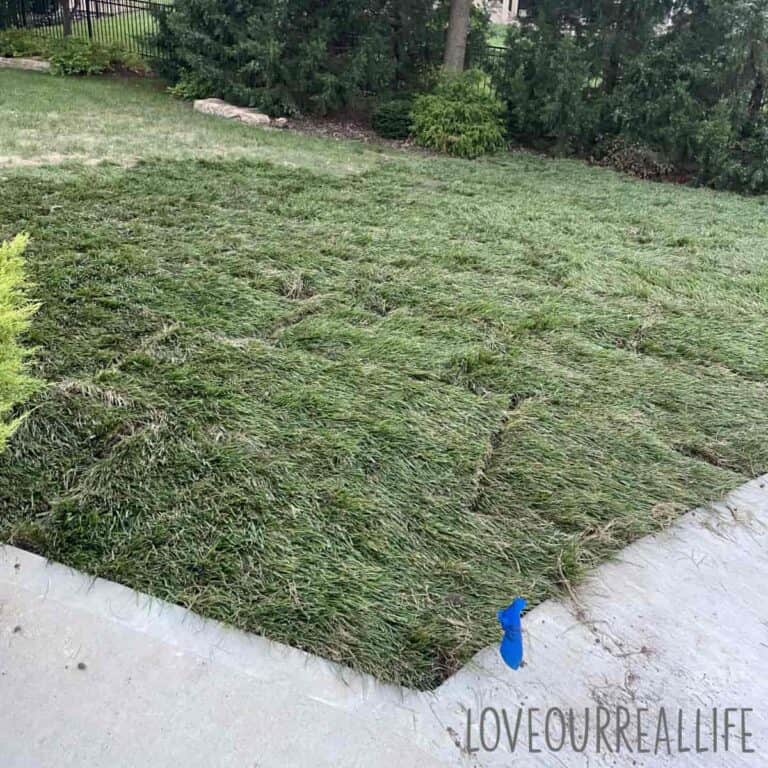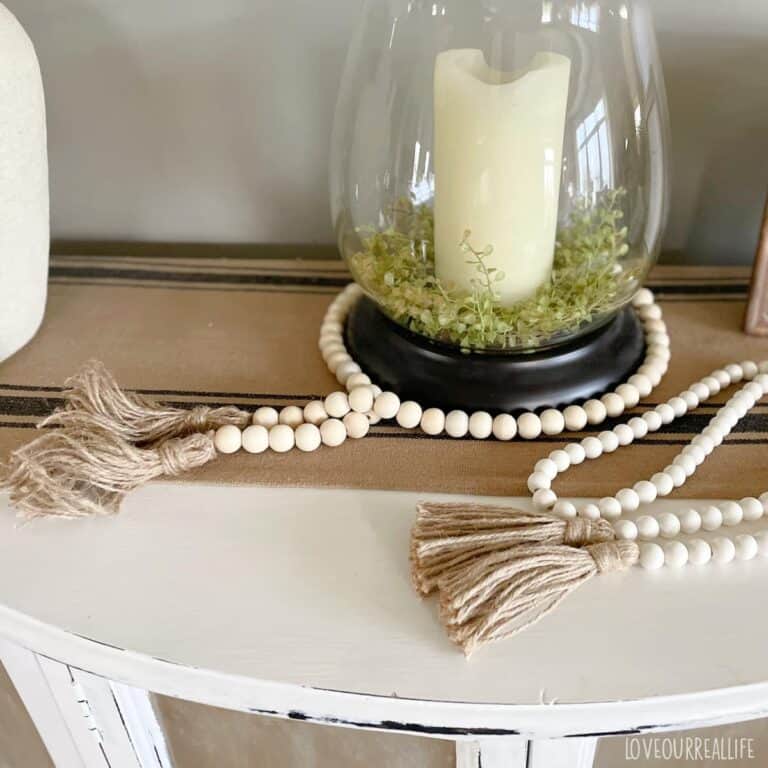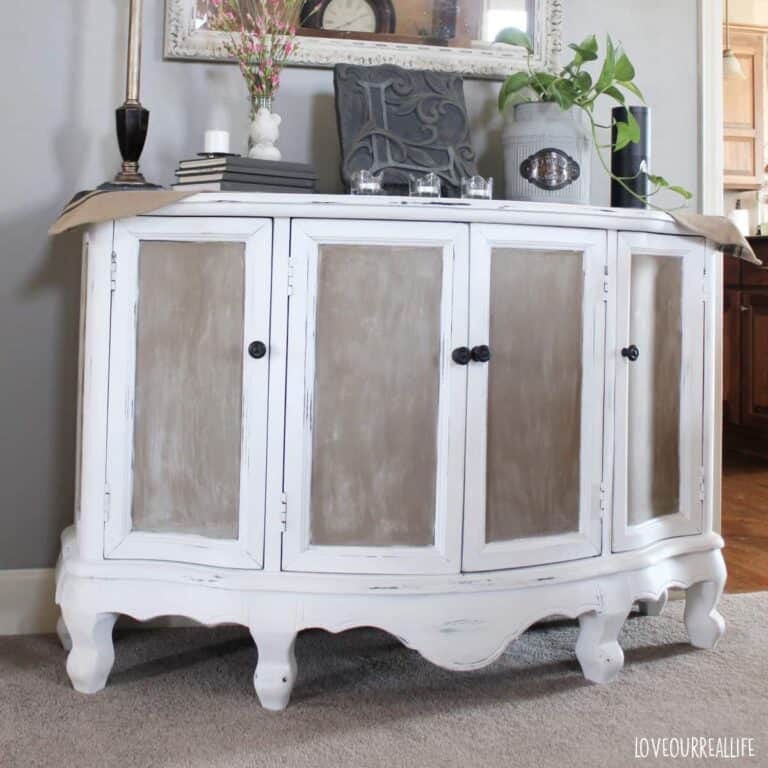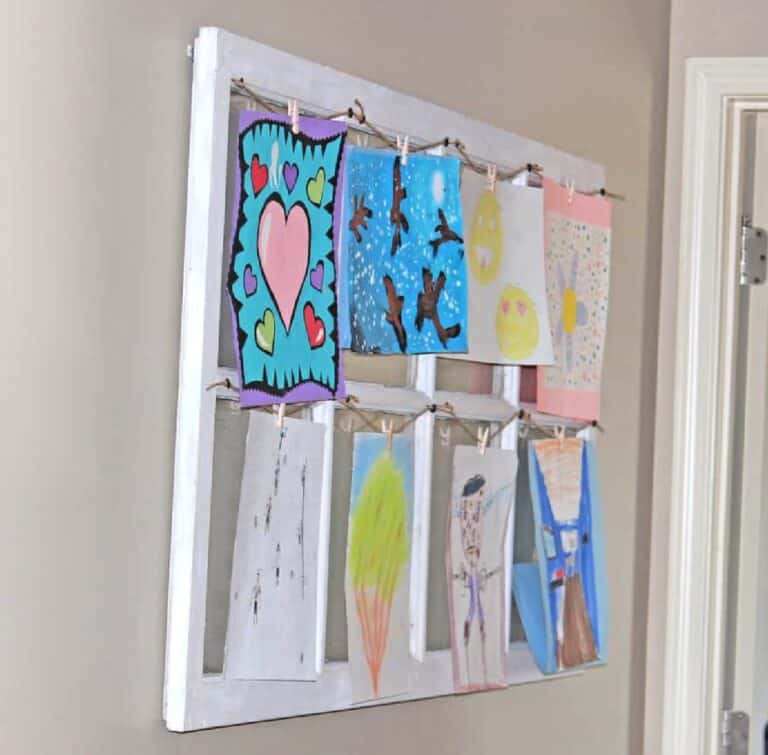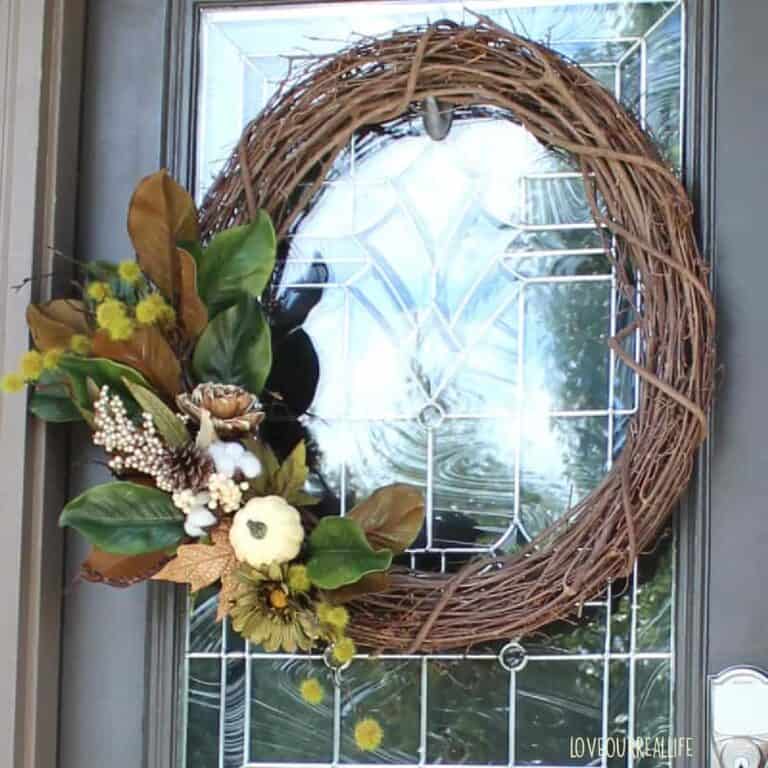How to Keep Furniture from Sliding on Your Floors (6 Ways)
Having a furniture piece that slides on smooth flooring surfaces is not only a nuisance, but it can damage your floors!
You can keep furniture from sliding on your floors by using floor protectors such as an area rug, furniture grippers, furniture pads, slip pads, wooden blocks, or felt pads. Let’s break down the details, including the pros and cons for each.
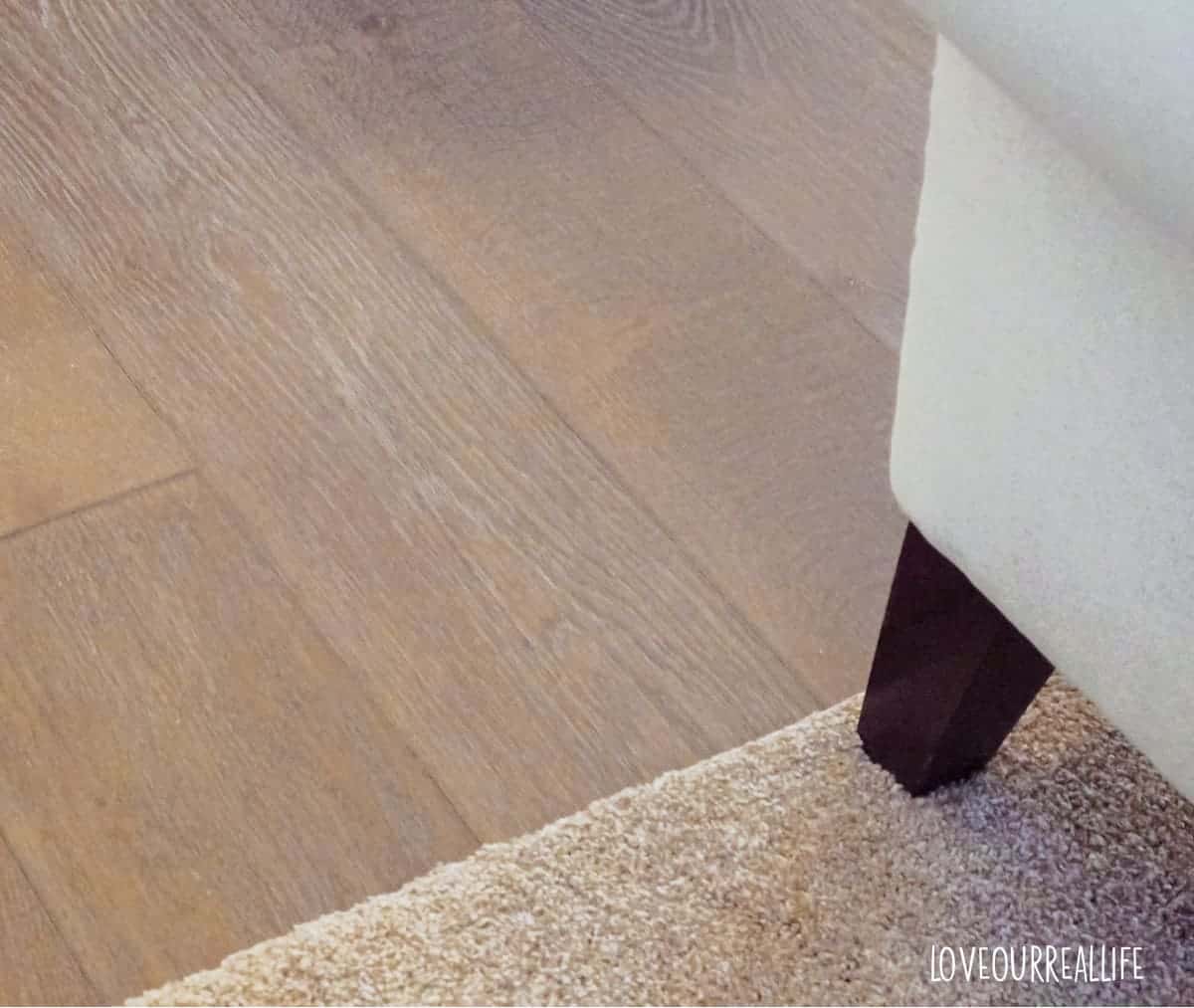
Having a comfortable space is key for family rooms or any room where you spend time with family and friends. No matter the floor type, occasionally furniture pieces, especially heavy furniture, will slide.
Get more home diy project ideas here.
Popular Solutions to Keep Furniture from Sliding
There are a number of solutions you can find to keep couch legs, table legs, and the other legs of your furniture from sliding on your flooring.
Finding the one for your specific situation will take just a bit of investigation and perhaps a quick trip to your local home improvement store or hardware store.
Consider your floor type when making your selection for the best solution to avoid the common problem of sliding furniture.
You will want to eliminate sliding furniture while simultaneously protecting the beauty of your floor.
Area Rug
Area rugs can be placed just under the front chair legs to keep a chair from sliding.
If you are placing an area rug over carpet, you will likely see good success. However, you might still battle sliding if the rug is on hard floors such as wooden floors, tile floors, or laminate flooring.

Adding a rubber rug pad beneath your rug is an easy way to take care of sliding.
The only problem with this is some types of rubber pads can be hard on wood flooring. Be certain you find a pad that will not create other problems down the road.
If you decide to use an area rug, it’s a good idea to buy a rug large enough to allow the front legs of the chairs and couch to all sit on the rug to help tie the space together.
Area rugs work well for coffee tables that slide as you will typically position all four feet of the table on the rug, eliminating opportunity for movement.
PROS:
- Can add a beautiful decor element to your space while simultaneously reducing furniture sliding.
CONS:
- Will likely require some form of rug pad underneath rug if used on a hard flooring surface.
- Can be expensive.
RELATED: How to Paint Stencils on Tile Flooring
Also note, sometimes it’s necessary to put something under an area rug to keep it from sliding!
A set of rubber pads can can on hard floor surfaces such as hardwood or a vinyl floor but an anti-slip rug pad will be your best bet to keep area rugs from sliding on carpet.
Furniture Grippers
Furniture grippers are an inexpensive solution to sliding furniture.
The key is finding the right size of grippers to fit the chair legs or table legs. These come in a variety of different sizes, so this shouldn’t be an issue.
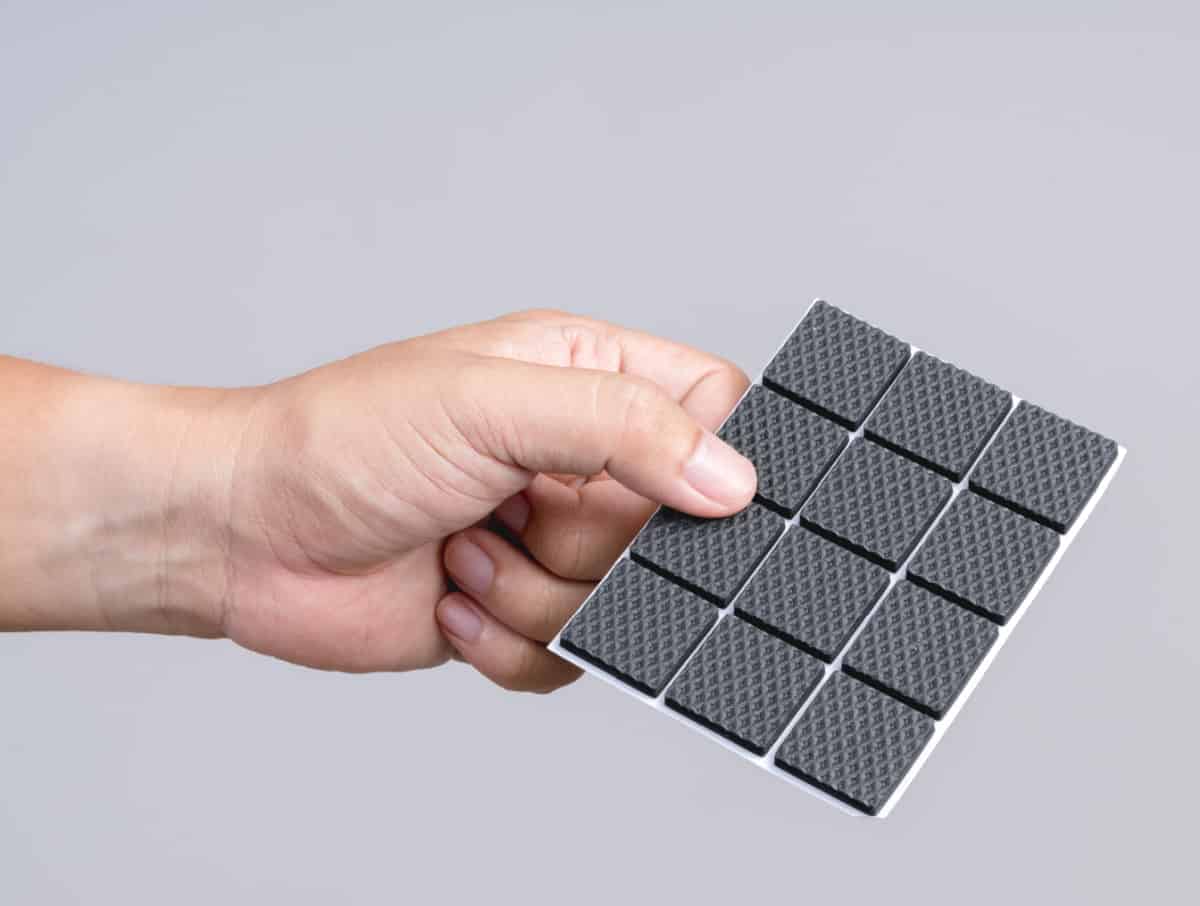
Some furniture grippers require you to cut to fit the foot of the furniture, while others are pre-sized.
These are a very good solution on most hard flooring surfaces as they will not likely damage your floors unless you place them over dirt and debris.
These would work great for a sliding bed, living room couch, and other heavy items and large pieces of furniture.
PROS:
- Aesthetic solution as furniture grippers are hardly noticeable.
- Good option for nearly all flooring types (would suggest felt pads for hardwood floors).
- Inexpensive.
- Readily available.
CONS:
- Occasionally need replaced, depending on the quality.
Keeping Floors Clean
Keeping floors clean in and of itself will not prevent furniture from sliding.
But, furniture is much more likely to slide around on dust bunnies, pet hair, or other debris that is on your floor. Plus, as mentioned above, this could lead to scratching the floor surface.
Regularly sweeping your floors is a good idea and an easy way to reduce sliding furniture.
PROS:
- Inexpensive
- Easy.
CONS:
- Will reduce but not present furniture sliding.
- Ongoing task that needs to be completed regularly.
Rubber Furniture Pads
Rubber furniture pads or non-slip furniture pads can give your furniture enough grip to stay put.
Many of the rubber pads come in a sock-like shape so you will need to ensure you get the proper size to fit on the tips of the chair or couch legs.
Be sure to measure the furniture feet before ordering silicone floor protectors.
These caps are not as inconspicuous as the furniture grippers or felt pads that go directly under each of the legs of your furniture. But, they definitely give a nice grip to a hard surface to reduce furniture sliding.
Standard rubber pads are typically a soft material that give enough grip for the feet of your furniture to stay in place.
A downside to rubber pads is they can potentially cause discoloration of hardwood flooring. Others have reported some level of scuffing on hardwoods with the rubber pads.
PROS:
- Easy to apply.
- Nice grib to hard floors.
- Likely the cheapest option.
CONS:
- Can discolor your flooring.
- Some find the sock-like rubber pads unattractive.
Wooden Blocks
DIY solutions such as making your own wooden stop blocks can help furniture from sliding.
One would need some handyman skills to properly measure, cut, and attach the wooden blocks with a small nail to the couch or furniture item.
While this might reduce sliding furniture, it is bound to scratch your hard floors, specifically hardwood flooring. Leaving scuff marks from the wood blocks is not the only problem.
As mentioned, you would need the proper tools and equipment to make this solution.
If you are feeling slightly handy, you can trace a pattern of your furniture leg onto a piece of cardboard. Use that as a guide to cut out a wooden block.
While it won’t completely prevent sofas or recliners from sliding on the floors, it can keep heavy furniture from getting too close to the wall or shifting much with use.
PROS:
- Custom fit to your furniture as you will take the exact measurements and make them accordingly.
CONS:
- You will need to make these yourself; therefore, one must have some basis handyman skills as well as tools.
- Can scratch hardwood flooring, tile, and linoleum flooring, especially when using on heavy items.
Felt Pad
Using felt pads is an easy and inexpensive option. The felt will not damage your flooring so you can rest easy regarding this if you have hardwood floors.

But felt pads, whether purchased in just the right size or cut with scissors from your own felt, will likely not fully prevent furniture from sliding as they do not provide enough friction.
You may need to find a balance between beautiful hardwood floors and slick flooring.
Dining room chairs are a good fit for felt pads as they allow chairs to slide more smoothly while protecting the floors.
PROS:
- Inexpensive.
- Do not damage the floors.
- Good for dining chairs.
CONS:
- Do not completely prevent furniture sliders.
I hope you have found some effective ways to combat furniture from sliding.
Most of these items can be found at your local home improvement store such as Home Depot or Lowes.
Different textures of flooring will affect your decision, of course. Affordable solutions are readily available, you just have to decide what is the best solution for you!
FAQs
As a general rule, furniture grippers that are rubber are your best bet to keep your couch from sliding on hardwood floors or other hard flooring surfaces.
Rubber pads or a rubber carpet pad underneath an area rug should eliminate sliding furniture on carpet.
Related Posts
How to Keep Furniture from Sliding on Your Floors (6 Ways)

Tips to keep your furniture from sliding on any flooring surface.
Materials
- Furniture grippers
- Area rug
- Felt pads
Tools
- Cleaner
Instructions
- Furniture grippers: Provides the best grip for hard surface flooring. Use caution with hardwood floors.
- Area Rugs: Great way to reduce sliding couches and coffee tables.
- Rubber Furniture Pads: Use these sock-like pads to slip on the feet of furniture to reduce slipping and sliding of furniture. As with furniture grippers, use caution on hardwood flooring.
- Keep Floors Clean: Keeping floors swept will reduce pet hair, dirt, and debris which can contribute to furniture moving.
- Wooden Blocks: A diy solution. Cut blocks to fit the bottom of your furniture legs and use a small nail to attach. While this might reduce furniture sliding, it is likely to scratch hard floor surfaces.
- Felt Furniture Pads: Great for use on hardwood flooring as this solution is has the least risk for damaging or scratching.
Notes
Determine which solution to stop furniture from sliding is best for your home and flooring type. Cost of project varies greatly depending on product selection.

